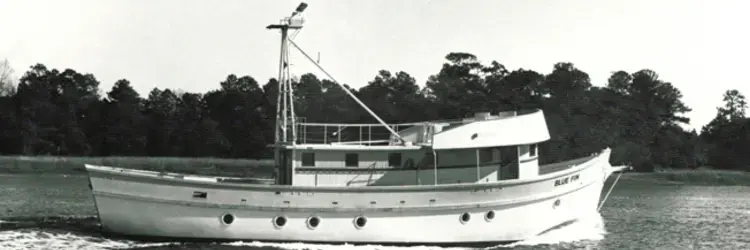The roots of UNOLS go back to the 1960's often called the golden years of oceanography. There was an unprecedented growth in the marine sciences; existing labs were expanding; new labs were being established; and more and more research ships were putting to sea; and the sizes of the ships were increasing. The support of research ships and their operations was becoming big business. By 1970 there were 33 ships operated by 17 laboratories. Twelve of the ships were of a size invoking regulatory inspection (over 300 gross registered tons).
Three principal concerns began to emerge: (l) Investigators from non-operating labs were seeking a positive means of gaining access to ship time, even to the point of more labs acquiring more ships. Operators were willing to accommodate outside users but there was no orderly means of achieving it. (2) Federal supporting agencies, chiefly NSF and ONR, were concerned over the increasing costs of the vessels and the differing modes of operations and their funding. They also were acutely aware of (1) above. (3) The university ship operators saw a collision course between higher ship costs and increasing ship numbers on what was becoming a level funding field.
About this time, in 1969, the President's Commission on Marine Science and Engineering (Stratton Commission) in its classic report included a recommendation for National Oceanographic Laboratories intended to be a partnership between federal agencies and academic institutions in a full range of research and supporting facilities. However, unlike other aspects of the Report (such as establishing NOAA and Sea Grant), it was not well defined. Viewed by federal agencies as "control", and by academia as "send more money", it did not progress very far. To NSF, however, it served as a possible means of bringing the academic research fleet together into a more coherent arrangement. First proposed as "NOLS" the plan contained provisions for coordinating and scheduling the fleet. University labs agreed with the goals of the arrangement but opposed the scheme as tilting toward excessive federal control. A joint group of federal and university administrators worked out a counter proposal for a University-NOLS which achieved the goals of community wide ship access, cooperative ship scheduling, standardized operations, and uniform funding arrangements, but remaining within the university sphere and to be coordinated by an association of labs designated as UNOLS.
UNOLS was officially launched at its charter meeting in 1971 by seventeen ship operating labs. The initial thrust was development of ship scheduling and investigator placement procedures. This was followed by uniform cost accounting, cruise reporting, ship operations data, and information services. Key elements of UNOLS were that ship operations remained the responsibility of the individual lab operator, and that UNOLS was not a ship funding activity.
In order to make UNOLS more responsive to the entire community, non-ship operating labs were quickly brought in as associate members and later becoming full members.
Other efforts developed at the outset of UNOLS were standards for shipboard equipment and technical services, foreign research clearance procedures, mission requirements for new ship planning, and shipboard safety standards. In recognition of the uniqueness of specialized facilities, a category of National Oceanographic Facility was established each with its own oversight body and scheduling arrangement. These have included an expeditionary vessel, instrumented aircraft, and deep submergence vehicle. The scheme provided termination as the need diminished. (Only the last named remains.)
Although not on the original agenda for the establishment of UNOLS, fleet replacement quickly became an important consideration. Over two thirds of the ships then sailing were mission obsolete. Most were becoming platform obsolete as well. By the Fall of 1972 working groups were established to develop mission requirements and concept designs for new ships in the coastal, intermediate, and global size categories as well as specialized vessels such as polar research, geophysical, and submersible handling. With its close ties to the overall community, UNOLS was uniquely suited to serve this function. As a result, almost every U.S. research vessel built in the past 20 years (as well as some foreign) bears the mark of these studies.
As UNOLS has evolved over the years to meet changes and challenges, its role remains the same as was first envisioned; to coordinate and serve the Academic Research Fleet.
Written by Robert P. Dinsmore, June 1998
